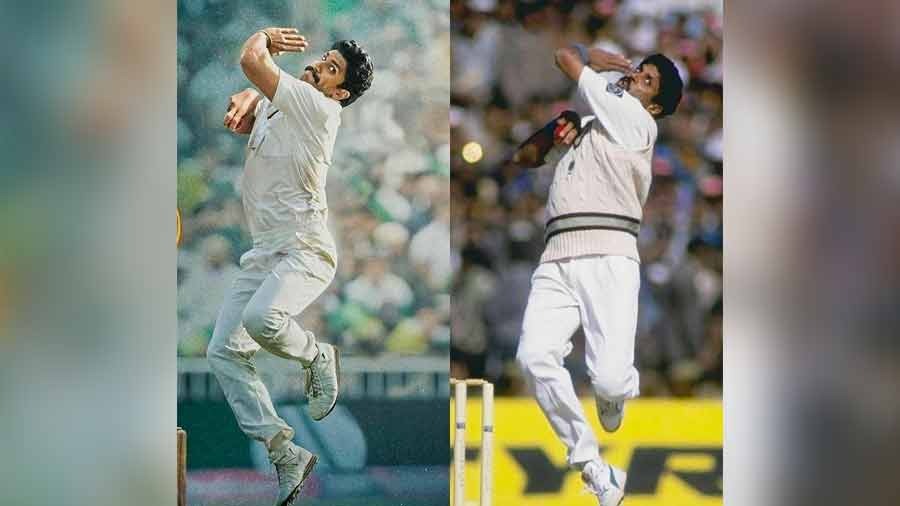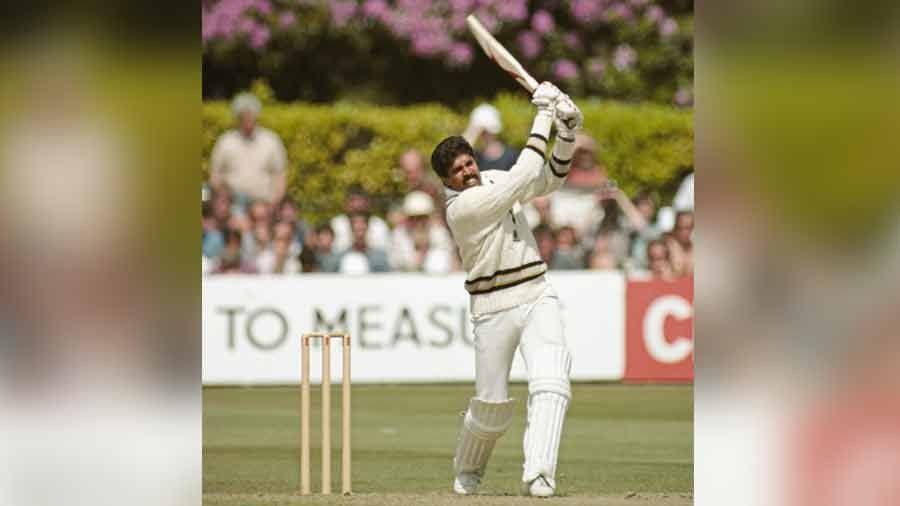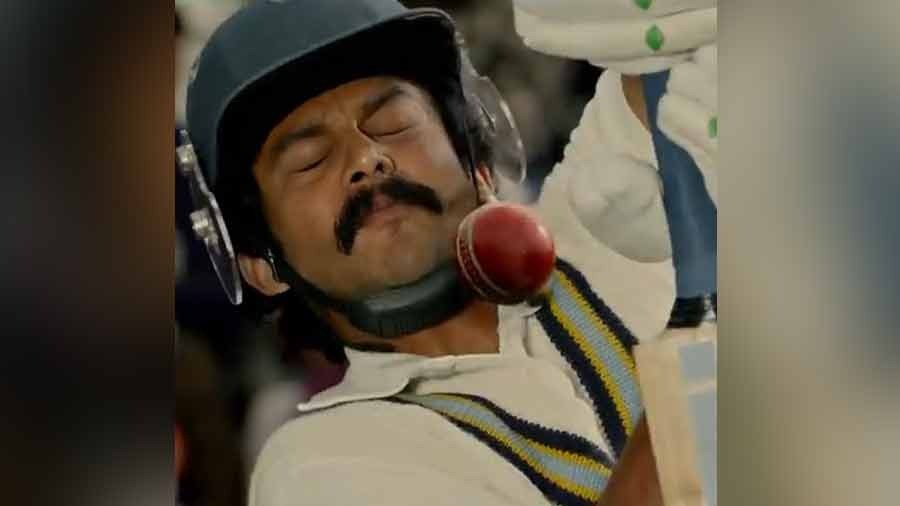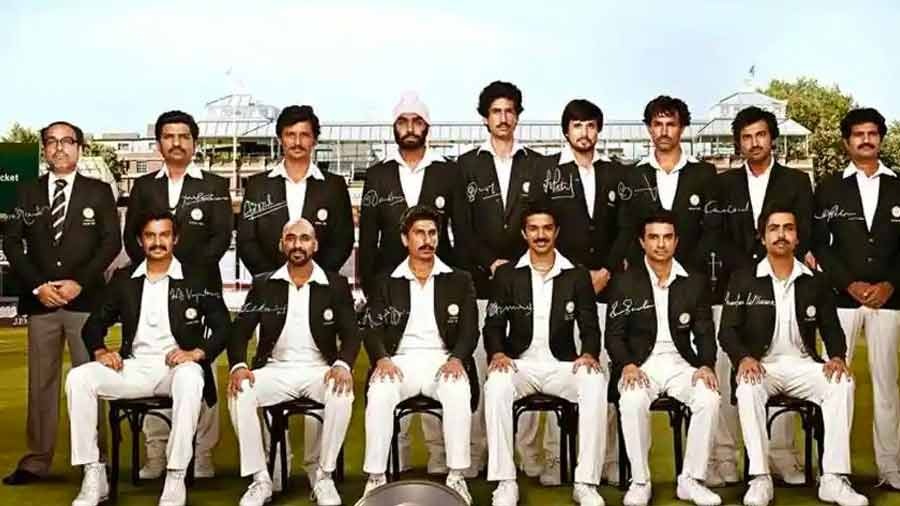The stage was set. The setting was perfect. And a knowledgeable audience, almost prescient, waited for the inevitable.
The coup de grâce, so to speak. Seldom had the denouement seemed so predictable.
But in that summer of audacious Davids, the favoured Goliaths were about to take a mighty tumble on a stage they had dominated for long. Courtesy an act of supreme disdain that would go on to change the script and, eventually, the course of a nation’s history. Cricketing history.
Thirty-eight years later, looking back at that moment, it might be fair to say that the entire prosperity of the Indian cricket diaspora and the hundreds, if not thousands, who have made their fortunes riding this crest of unexpected triumph owe a lot to Sir Isaac Vivian Richards’s decision to go for his eighth boundary on that eventful afternoon at Lord’s back in 1983.
The subsequent 25-yard sprint that saw Kapil Dev take an outstanding catch to dismiss the rampaging Richards — and turn the game on its head — is how the movie, 83, starts.
The movie is somewhat of an extended highlights package of India’s journey through the 1983 World Cup, interspersed with small backstories and anecdotal incidents involving the players. The casting is spot on, be it Jiva’s rendition of a lively Kris Srikkanth or Tahir Bhasin’s measured portrayal of Sunil Gavaskar.

Director Kabir Khan has channelised Ranveer Singh’s energy into capturing Kapil Dev’s enthusiasm and positivity to perfection @83thefilm/Instagram
The life of the film is, however, Ranveer Singh’s outstanding take on Kapil Dev, the captain of the Indian side. Director Kabir Khan has channelised Ranveer’s energy into capturing Kapil Dev’s enthusiasm and positivity to perfection, as perfect as possible in a venture like this. The mannerisms and nuances of all the Indian players are accurate and, after a point, it becomes difficult to differentiate reel from real footage, which the film has in plenty.
Kapil Dev’s fabled unbeaten 175 in an earlier match against Zimbabwe at Tunbridge Wells — that rescued India from humiliation and set the tone for eventual World Cup glory — is another high point of the movie. The BBC was on strike that day, so there’s no footage of the match. That means most of us have only read or heard about the match and the knock, ranked by Wisden among the top 10 ODI innings of all time.

Kapil Dev en route to his fabled unbeaten 175 against Zimbabwe at Tunbridge Wells Trevor Jones/Allsport/Getty Images
What the broadcaster missed, the movie screen has recreated. The film has come up with an imaginative re-creation of that innings, ensuring on celluloid what striking staff denied to millions of television viewers.
Not that it’s always the sweet onscreen thwack of the heavy willow; sometimes it’s the brutal impact of ball on human body that draws a collective gasp from the audience. Like when, in one of the scenes, the on-screen Dilip Vengsarkar has his jaw fractured by fast man Malcolm Marshall. Quite reasonable to assume that few in the audience had seen Fire in Babylon or YouTube footage of the famed West Indian team of the 1970s and the 1980s. That brings me to the part of the movie that left me a tad disappointed.

The on-screen Dilip Vengsarkar has his jaw fractured
The portrayal of the West Indian team who have the maximum screen time other than the Indians, the giants (literally and figuratively) that they were, is underwhelming. If the idea of Clive Lloyd is limited to someone tall, droopy-shouldered and bespectacled and that of Richards as a well-built man chewing gum, it shows lack of effort. Agreed, these were important characteristics of the two men. But a portrayal of Lloyd without giving the audience a peek into the way he marshalled his troops, his leadership on the field, and that of Richards without his famed swagger and walk to the batting crease, or the thumping of the back of the bat, leaves something to be desired.

The intimidating effect Vivian Richards had on the opposition doesn’t quite come through Dunn/Daily Express/Hulton Archive/Getty Images
Richards’s character in the film gives one the feeling of a sly person, with his smirks clearly not helping. The intimidating effect the man had on the opposition doesn’t quite come through. Wish director Kabir Khan had spent a little more time dwelling on the supreme skills and abilities of the West Indian team. Also, it would have established how big a feat ‘Kapil’s Devils’ actually pulled off.
Something else too struck a discordant note: in a movie where Kapil Dev’s bowling action has been portrayed to perfection, England’s Bob Willis’s distinct run-up is not paid much attention to. A storyteller is known for his attention to detail and, on this front, the movie certainly fails a true cricket fan.

@83thefilm/Instagram
I had visited the theatre with my wife, who is not much of a cricket buff. She found it a little odd on seeing the team’s manager, P.R. Man Singh (portrayed excellently by Pankaj Tripathi), haggling for extra allowances for the team. The fact that money could have been a problem for the Indian cricket team comes as a bit of a surprise to the uninitiated.
The sight of the Indian captain and his deputy doing their laundry in the bathtub to save money must be incomprehensible to most people born after 1983. After all, this generation has grown up reading and seeing pictures of cricketers’ sports cars and their sea-facing penthouses.
The movie does a great job of portraying how much the odds were stacked against Kapil Dev’s men, both on and off the field. The English media, needless to say, had a pretty low opinion of the Indian team, with some like David Frith, then editor of the Wisden Cricket Monthly, suggesting that they withdraw from the World Cup. That he had to “eat” his words later is another story.

A clipping of David Frith, then editor of the Wisden Cricket Monthly, ‘eating’ his words
I had entered the hall thinking that I wouldn’t be moved by any of the so-called emotional scenes. However, the sight of a five-year-old waving the Tricolour in the midst of opposition flags invariably does end up affecting the tear glands.
Metaphorically speaking, this movie as an entity is just like the Indian team of 1983 — greater than the sum of its parts. It’s up to the viewer if they want to look at it with the dismissive assessment of David Frith or the optimism of Kapil Dev.
Somok Sengupta is an engineer-turned-management professional who represented his college in cricket.
